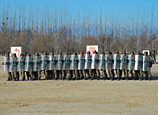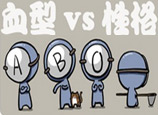
But not many Chinese have heard of the city of Suzhou in northern Anhui Province, where the war occurred, the king was defeated, the concubine killed herself and the king committed suicide. Suzhou is also where Yu is said to have been buried.
A memorial park celebrating Yu was built in 2011; it includes her tomb, exhibitions about her story and artworks of Yu the Beautiful (Yu mei ren), as she was known.
The city, mainly driven by agriculture, has just started its industrial development and as yet has done very little to promote tourism, though it has a rich history and culture from the Han Dynasty.
The history and culture of Suzhou are basically defined by the Han Dynasty when many wars and major events occurred in the region, and by the Tang (AD 618-907) and Song (960-1279) dynasties when the Grand Canal of China brought prosperity and the economy and culture flourished, says tour guide Wang.
"Culture and art from the Han Dynasty are very important for Chinese people, because it was the first long and stable period in which the country was unified and developed," Wang says.
Han people adopted the name from the dynasty, which was established by Emperor Gao (256 BC or 247 BC-195 BC), the first emperor to rise from a non-royal class. Before him, kings and emperors inherited their crowns.
Although it was the First Qin Emperor (259-210 BC) who unified China in 221 BC, the Qin Dynasty (221-206 BC) quickly ended after his death, while the succeeding Han Dynasty (206 BC-AD 220) lasted more than 400 years, leaving magnificent artifacts and legends.


















 Why supervision on 'drug chicken' lacks intensity?
Why supervision on 'drug chicken' lacks intensity?


![]()
